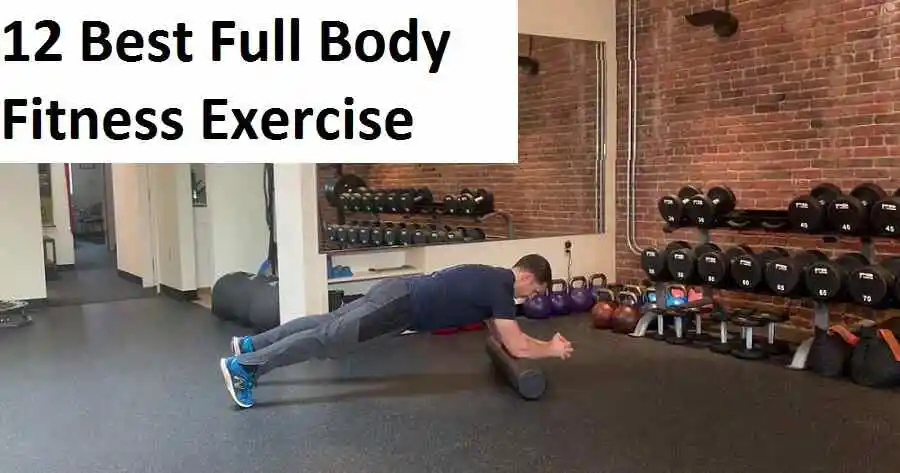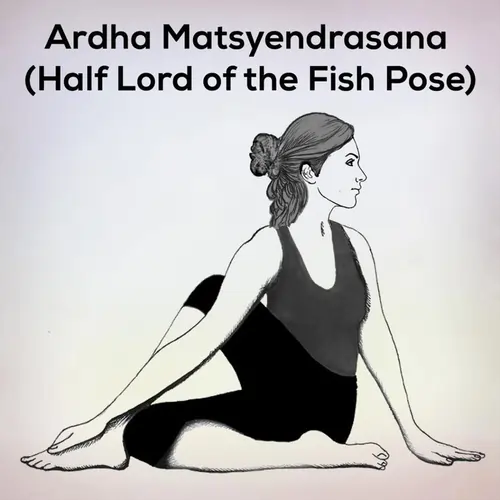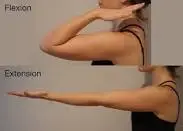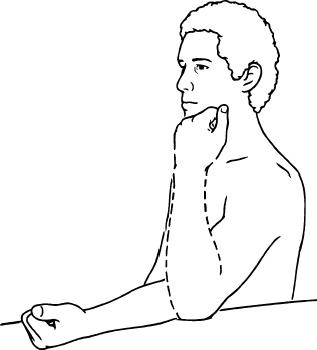12 Best Exercises for Full-Body Fitness
Table of Contents
Introduction
Dynamic movements that work for numerous muscle groups at once are called full-body fitness exercises. These workouts, like burpees, deadlifts, and squats, work multiple body parts in one move. Efficiency is emphasized since these entirety movements improve workouts by simultaneously targeting the upper and lower body, core, and stabilizing muscles. Optimizing the workout experience, improving results in a time-efficient manner, and promoting general functional fitness, strength, and balance are the objectives.
In this article twelve of the most important exercises to incorporate into your full-body training regimen will be covered. After that, we’ll offer you an exceptional full-body exercise to assist you reach your objectives.
Benefits of strength training
When paired together, strength training and aerobic exercise can assist people in maintaining weight. Building strong muscles through strength training increases metabolism and aids in fat burning. Additionally, studies indicate that strength training improves sleep quality in older adults with depression and lowers anxiety and depressive symptoms in healthy adults and adults with a diagnosis of depression.
Benefits of full body fitness strength training
Exercises for full-body fitness training can be done anywhere and are simply modified to accommodate different levels of fitness. Because they target several muscle groups and encourage functional movement patterns, these exercises are a great approach to increasing general fitness.
Convenience is one of the main benefits; you can do them anywhere, at home, at a park, or while traveling, as they don’t require any special equipment. By simulating daily motions, using your body weight as resistance also helps you develop functional strength while improving your balance, flexibility, and coordination.
Many bodyweight exercises include high-intensity interval training (HIIT) components, which can help with weight management and cardiovascular health. All things considered, bodyweight exercises offer a thorough, effective, and adaptable form of training.
Exercises for Full-Body Fitness
Pushups
Pushups strengthen the arms, chest, and shoulders by using many different kinds of muscular groups.
How to do them:
- Raise your arms up straight and your whole body in a single direction, starting from the plank position. maintain the toes curled and the feet aligned to support the body.
- Lower the body to the floor while slowly bending the elbows outward while maintaining the head in alignment with the spine.
- Make an effort to position your lower back and hips.
- Aim to contact the floor with the chin or chest as low as you can.
- The body is forced back up into where it began by the arm muscles.
- To support the back, keep your abdominal muscles active throughout.

Body weight squats
Squats using body weight strengthen the stomach, buttocks, hips, thighs, calf meat, and shins, as well as the lower body and core.
How to do them:
- Place your feet parallel to the floor and twist your toes slightly outward.
- While keeping your hands by your sides with the palms facing toward one another, roll your shoulders back.
- When sitting, hold your back flat by extending your knees and thrusting your hips back.
- Until your thighs are parallel to the floor, gently bring yourself forward.
- Straighten back up into the starting position by pushing through the feet.
- As you stand back up, exhale after taking a breath to enter the squat.

Lunges
The muscles in the legs, buttocks, hips, and abdomen are worked while lunges.
How to do them:
- Place your feet together and stand upright.
- As you take an extended stride with one leg, bend your knee and bring your foot flat on the ground.
- The supporting leg’s knee should be bent toward the floor.
- Push yourself back to standing using the forward leg’s muscles.
- Do the same with the other leg.
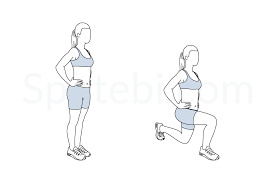
Running
Running is an aerobic exercise that builds blood circulation and strengthens bones. Jogging is a less strenuous running technique that can be ideal for beginners.
Interval running, which includes running a predetermined distance or amount of time, and then transitioning to walking before starting again, is a common way for people to increase their running endurance. As an alternative, people can alternate between sprinting and running.
Training with sprint periods may improve aerobic capacity, raise peak running speed, and reduce body fat.
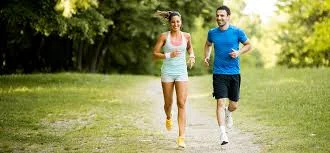
Side planks
Strengthening your core with side planks might help decrease lower back pain. Side planks strengthen the muscles in the hips, buttocks, and abdomen.
How to do them:
- Place your elbow across the shoulder of your right arm and your legs straight on top of each other while you are on your right side.
- To elevate your hips and legs off the ground while still maintaining your head and the top of your body advancing, contract your abdominal muscles.
- Maintain the posture for 15–20 seconds, keeping particular focus on keeping the shoulders, head, and hips in place.
- Slide to the left, get closer to the ground gradually, then do it again.
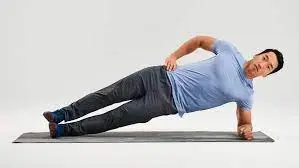
Planks
Planks help develop core strength and improve the muscles in the back and abdomen.
How to do them:
- Keep your elbows in line with your shoulders as you begin by placing your lower arms and elbows on the floor.
- The body should be raised till it makes a horizontal, straight line with the floor.
- Maintain the toes flexed and the feet straight to support the body.
- Wait 20 to 30 seconds.
- Lower yourself slowly to the ground, take a minute to recover, and then do it three to five times.
Those who feel powerful after doing this exercise can attempt a high plank. The same body alignment is used for this motion, but the practitioner maintains a straight arm position with the hands flat on the floor, just above the shoulders.
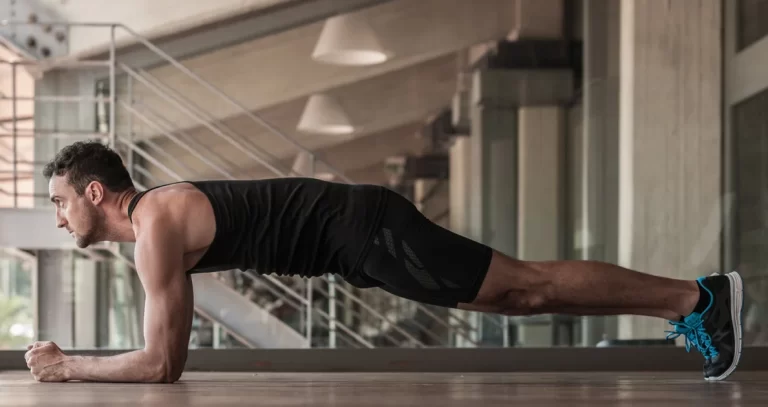
Knee tucks
Knee tucks strengthen the shins, calves, and abdominals. For this kind of activity, people will require an exercise ball, frequently known as a stability ball.
How to do them:
- Sit with your legs apart, place your hands on the mat, and then sit back.
- Bend forward and elevate your knees to your chest.
- Following a moment or two of holding, fully extend your legs so they are separate from the mat.
- Repeat.

Glute bridge
The glute bridge strengthens to connect the back muscles, which are found in the lower part of the body.
How to do it:
- Compress your lower back onto the ground to tighten your buttocks and abdominal muscles.
- lift our buttocks and abdominal muscles to lift our hips onto the floor and align them apart from our shoulders and knees. Do not arch your lower back.
- Return to the starting position slowly.
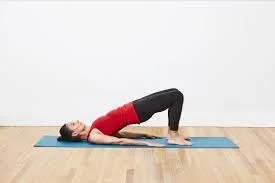
Dumbbell rows
Rows with dumbbells can improve muscle growth and back strength. Strengthening muscles causes the body to burn more calories. When you’re sleeping, trust your source. This workout requires two dumbbells.
How to do them:
- Tilt forward from the hips while maintaining a straight back while standing with your knees slightly bent.
- With your arms straight and your wrists towards each other, hold the dumbbells in the direction of you.
- Move one hand back to the beginning position after pulling it toward the rib cage.
- Do the same with the other arm.
- For 8–10 repetitions per set, switch sides.
- Following one of the three sets of repetitions, take a 45-second break.

Pike roll-out
The muscles in the arms, shoulders, and abdomen are worked during a pike roll-out. People might need a stability ball.
How to do it:
- Place your hands directly behind your shoulders and press your hands and toes into the floor to form a plank position.
- To rest flexed toes on the ball, roll forward on it. Maintain a straight body alignment, placing the palms flat on the ground and the arms straight beneath the shoulders.
- The head will be between the arms, the back straight, and the hips aligned with the shoulders.
- Return to the beginning position by lowering yourself gradually.

Crow Stand
The Crow Stand is an exercise technique that improves balance and strengthens the arms, wrists, and core.
How to do it:
- Transfer the weight to your hands while maintaining your balance on your toes.
- Take one foot off the ground at a time to begin.
- When you can, raise both feet off the ground, touch your big toes together, and use your hands to balance.
- Return the feet to the floor slowly.

Swimming
Swimming is a low-impact activity that works practically every muscle group. As an outcome, it could potentially be appropriate for those with specific illnesses or injuries. Swimming is most effective in a public pool or under close supervision, especially for beginners.
An excellent all-around activity is swimming because it:
- maintains an elevated heart rate while relieving some of the muscular strain.
- builds endurance, muscle strength, and cardiovascular fitness.
- protects the heart, lungs, and weight from growing healthy.
- tones muscles and builds strength.

12 Best Exercises for Full-Body Fitness: Get Strong and Fit!
How to progress exercises
As their fitness increases, people might take a few steps to increase the difficulty of these workouts. These actions consist of:
- adding more weight
- Increasing the overall number of circumstances, packages, or simultaneously
- increasing the frequency of workouts
Summary
Frequent exercise is essential for general fitness and well-being. Cardiovascular and resistance exercises together are an effective way to help prevent a lot of illnesses. As their fitness levels rise, people can gradually increase the frequency of their exercises or the amount of repetitions and sets in each one. A structured recovery plan, enough rest, moderate-to-intense physical activity, and a healthy diet are the main components of physical fitness.
FAQs
Full-body fitness: what is it?
You are working out your complete body, basically using and stimulating all of the major muscle groups in a single workout. Combining exercises that work the upper and lower bodies as well as the core in a single training session will help you gain muscle.
Which full-body exercise is the best?
Pushups
Squats
Lunges
Side planks
swimming
Do full-body exercises work?
All of the main muscle groups are worked throughout a full-body workout, which promotes balanced muscle growth and flexibility. Efficiency: They are perfect for people with hectic schedules because you can attain notable improvements in your physical and emotional health with just two to three sessions each week.
How many times a day do you squat?
Starting with two to three sets of fifteen repetitions every other day is a safe strategy for beginners. As your fitness improves, you can progress to 3 sets of 20 reps every other day. For 30 days, you can perform 100 squats daily as a fitness challenge.
What are the advantages of exercising for whole-body fitness?
An excellent full-body exercise increases strength and endurance, reduces injuries, and promotes general health. Furthermore, it increases your level of activity, particularly if you continue to do it. For instance, if you focus on strength or aerobic training but ignore core training, you may be more likely to sustain an injury.
References
- Davies, D., & Hicks, R. (2024, April 29). Become the Strongest, Leanest Version of Yourself with These 5 Full-Body Workouts. Men’s Health. https://www.menshealth.com/uk/building-muscle/a28433729/full-body-workouts/
- How to get a full-body workout at home without any equipment. (2024, October 31). TODAY.com. https://www.today.com/health/strength-training-exercises-your-home-workout-no-gym-needed-t192702
- Department of Health & Human Services. (n.d.). Swimming – health benefits. Better Health Channel. https://www.betterhealth.vic.gov.au/health/healthyliving/swimming-health-benefits
- Editors of Men’s Health. (2023, June 2). 45 of the Best Exercises to Boost Your Home Workout Gains. Men’s Health. https://www.menshealth.com/uk/building-muscle/a754099/the-15-best-beginners-exercises-to-do-at-home/

